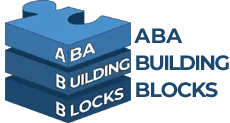In the dynamic landscape of Applied Behavior Analysis (ABA) therapy, establishing a center requires more than just passion—it demands precision, strategy, and comprehensive understanding. “Building Bridges: The Essential Guide to Launching Your ABA Therapy Center” serves as a beacon for aspiring entrepreneurs and seasoned practitioners alike, navigating the intricate process of center inception with finesse. From conceptualization to operational execution, this guide is a roadmap, meticulously crafted to address the multifaceted facets of building a successful ABA therapy center. Whether it’s crafting a mission statement that resonates or fostering collaborative partnerships within the community, this comprehensive resource equips readers with the tools necessary to embark on this transformative journey confidently.
Defining Your Vision: Crafting a Mission Statement
Crafting a mission statement is the foundational step in establishing your ABA therapy center’s identity and purpose. It encapsulates your core values, goals, and the impact you aim to make within the community. A well-crafted mission statement not only clarifies your center’s direction but also serves as a guiding principle for decision-making and strategic planning. Through introspection and stakeholder input, you can articulate a mission that resonates with your team, clients, and stakeholders, fostering alignment and commitment to your vision. This section will delve into the significance of a compelling mission statement and provide practical tips for crafting one that encapsulates the essence of your ABA therapy center.
Navigating Regulatory Requirements: Licensing and Compliance
Navigating the labyrinth of regulatory requirements is essential for ensuring the legal operation and ethical integrity of your ABA therapy center. From obtaining licensure to adhering to state and federal regulations, compliance is non-negotiable in this field. This section will provide a comprehensive overview of the regulatory landscape, outlining the specific licenses, certifications, and permits required for operating an ABA therapy center. Moreover, it will offer guidance on maintaining compliance with industry standards, best practices, and ethical guidelines to safeguard the well-being of clients and uphold the professionalism of your center.
Securing Funding: Financing Your ABA Therapy Center
Securing adequate funding is paramount for launching and sustaining an ABA therapy center. Whether you’re seeking capital for initial startup costs, facility expansion, or ongoing operations, navigating the intricacies of financing is a critical aspect of center development. This section will explore various funding sources, including grants, loans, private investment, and insurance reimbursement models, providing insights into the advantages, challenges, and considerations associated with each option. Additionally, it will offer practical strategies for developing a comprehensive financial plan, budgeting effectively, and maximizing revenue streams to ensure the long-term viability and success of your ABA therapy center.
Designing an Effective Treatment Model: Strategies for Program Development
Designing an effective treatment model is a cornerstone of success for any ABA therapy center. By developing a comprehensive and individualized program, you can tailor interventions to meet the unique needs of each client, maximizing their potential for growth and development. Here are six key strategies for program development:
- Conduct thorough assessments: Begin by gathering comprehensive data through assessments to understand the client’s strengths, challenges, preferences, and goals. This lays the groundwork for developing personalized intervention plans tailored to their specific needs.
- Set measurable goals: Establish clear, measurable, and achievable goals that align with the client’s strengths and priorities. Break down overarching goals into smaller, achievable objectives to track progress effectively and adjust interventions as needed.
- Implement evidence-based interventions: Utilize evidence-based practices grounded in the principles of ABA to guide intervention strategies. Select interventions based on empirical support, individual client characteristics, and treatment goals to maximize effectiveness and outcomes.
- Incorporate individualized strategies: Recognize the uniqueness of each client by implementing individualized strategies that consider their preferences, learning styles, and environmental factors. Flexibility and customization are key to designing interventions that resonate with the client and promote meaningful progress.
- Collect and analyze data: Implement rigorous data collection procedures to monitor progress, evaluate intervention effectiveness, and make data-driven decisions. Regularly analyze data to identify trends, modify strategies, and optimize the treatment plan for continued success.
- Foster collaboration and communication: Promote collaboration among interdisciplinary team members, including behavior analysts, therapists, caregivers, and other professionals involved in the client’s care. Maintain open lines of communication to ensure alignment of goals, consistency in implementation, and holistic support for the client’s overall well-being.
Designing an effective treatment model requires a thoughtful and systematic approach that prioritizes individualization, evidence-based practices, and collaborative teamwork. By implementing these strategies, ABA therapy centers can create tailored intervention plans that empower clients to achieve their goals and reach their fullest potential.
Building Collaborative Partnerships: Engaging with Families and Communities
Building collaborative partnerships with families and communities is essential for fostering a supportive and inclusive environment within your ABA therapy center. Recognizing the pivotal role of parents, caregivers, and community stakeholders in the treatment process, this section will explore strategies for establishing open communication channels, fostering trust and collaboration, and empowering families to actively participate in their child’s therapy journey. From conducting family assessments to providing psychoeducation and support services, it will offer practical insights into cultivating strong partnerships that enhance client outcomes, promote family resilience, and enrich the fabric of your center’s community.
Recruiting and Training Talent: Staffing Solutions for Success
Recruiting and retaining top-tier talent is pivotal for the success and sustainability of any ABA therapy center. Effective staffing solutions encompass not only the recruitment process but also comprehensive training and ongoing professional development. Here are six key strategies for building a skilled and dedicated team:
- Define clear job roles and responsibilities: Establish clear job descriptions outlining roles, responsibilities, and qualifications required for each position within the organization. This clarity ensures alignment between candidate expectations and organizational needs, facilitating successful recruitment and onboarding processes.
- Implement robust recruitment strategies: Utilize diverse recruitment channels, including online job boards, professional networks, university partnerships, and industry-specific platforms, to attract a wide pool of qualified candidates. Tailor recruitment efforts to target individuals with relevant experience, credentials, and a passion for ABA therapy.
- Prioritize cultural fit and values alignment: Beyond technical skills and qualifications, prioritize candidates who align with the organization’s values, mission, and culture. Assess cultural fit during the interview process through behavioral questions, scenario-based assessments, and interactions with current team members.
- Provide comprehensive training and onboarding: Develop structured training programs to onboard new hires effectively and acclimate them to the organization’s policies, procedures, and expectations. Offer hands-on training, mentorship opportunities, and access to resources to support their professional development and integration into the team.
- Foster a culture of continuous learning: Encourage ongoing professional development and skill enhancement among staff members through workshops, seminars, conferences, and online courses. Provide opportunities for staff to pursue certifications, specializations, and advanced training in ABA therapy and related fields.
- Prioritize employee engagement and retention: Implement initiatives to foster a positive work environment, recognize employee contributions, and address staff feedback and concerns proactively. Offer competitive compensation packages, benefits, and opportunities for career advancement to enhance employee satisfaction and retention rates.
Recruiting and training talent requires a strategic and holistic approach that considers not only technical skills and qualifications but also cultural fit, ongoing development, and retention efforts. By implementing these strategies, ABA therapy centers can cultivate a skilled and motivated team capable of delivering high-quality services and driving organizational success.
Conclusion
Embarking on the journey of starting an ABA therapy business demands careful planning, strategic execution, and a commitment to excellence. Whether you’re crafting a compelling mission statement, navigating regulatory requirements, securing funding, or recruiting talent, each step plays a vital role in laying the foundation for success. ABA Building Blocks LLC, located in Naples, Florida, stands ready to support aspiring entrepreneurs in this transformative endeavor. With a dedication to quality care and a wealth of expertise, we offer guidance, resources, and personalized solutions to help you navigate the complexities of launching your ABA therapy center. Contact us at (833) 422-2249 or info@ababuildingblocks.com to take the first step towards realizing your vision.






